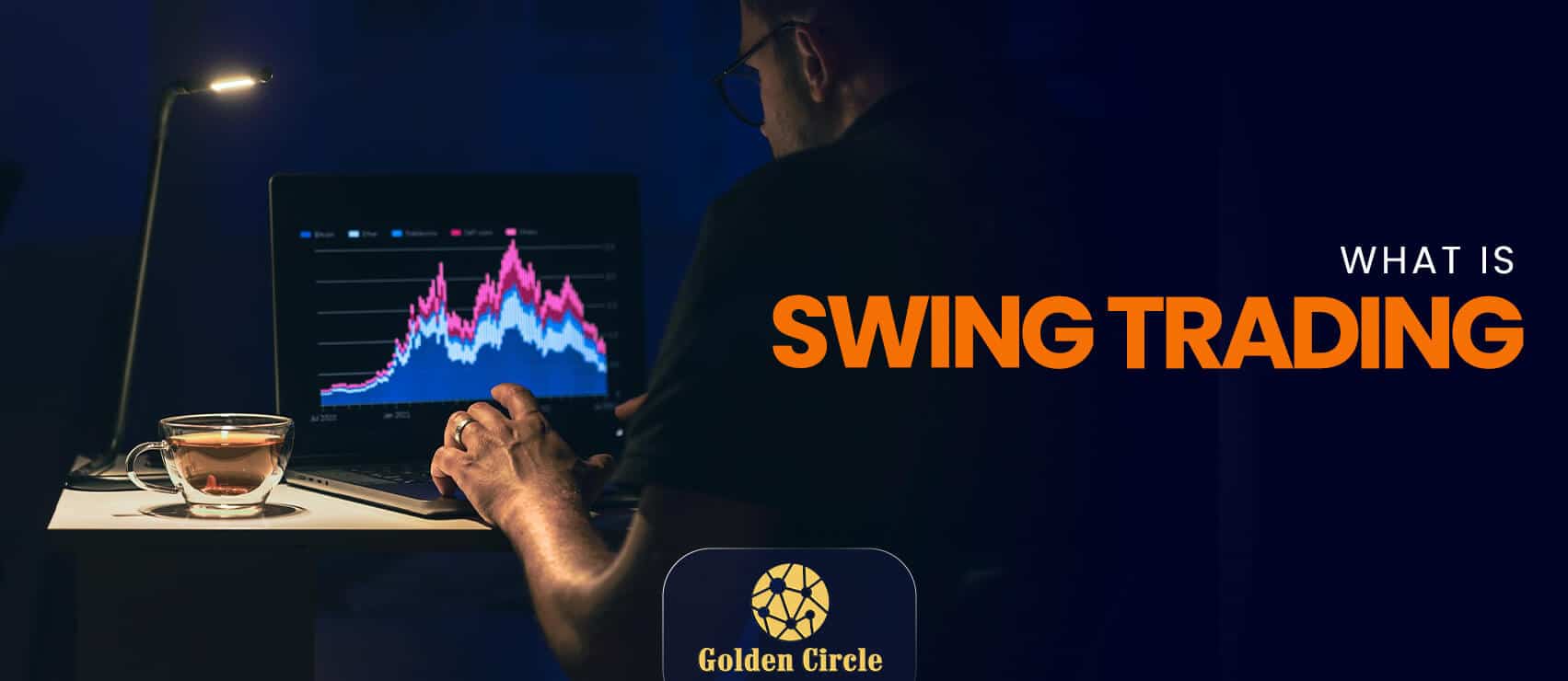Day Trading Vs Swing Trading Strategies
In the dynamic world of financial markets, trading strategies vary widely, each catering to different risk appetites, time commitments, and skill levels. Among the most popular strategies are day trading and swing trading. Both approaches aim to profit from price movements, but they differ significantly in execution, risk, and required expertise. This article will delve into the intricacies of day trading and swing trading, exploring their techniques, risks, and how they align with various trading styles.
What is Day Trading?

Day trading is a trading strategy where investors buy and sell financial instruments within the same trading day, aiming to profit from short-term price fluctuations. Unlike long-term investing, day traders close all their positions before the market closes, avoiding overnight risk and potential market gaps. This strategy relies heavily on technical analysis, real-time data, and quick decision-making to capitalize on small, rapid movements in asset prices. Day traders often execute multiple trades in a single day, employing techniques such as scalping and momentum trading to achieve frequent, incremental gains.
Techniques Used in Day Trading
Day traders utilize a variety of techniques to navigate the fast-paced environment of short-term trading. Each technique is designed to capitalize on different aspects of market behavior and price movement. Here are some key methods employed in day trading:
- Scalping
Scalping is a day trading technique focused on making small profits from numerous trades. Scalpers enter and exit positions quickly, often within minutes, to capture tiny price movements. This method requires a deep understanding of market mechanics, quick decision-making skills, and a solid strategy for minimizing transaction costs. - Momentum Trading
Momentum trading seeks to profit from stocks that exhibit strong directional movement. Traders identify stocks with high volatility and strong trends, riding the momentum to maximize gains. Momentum traders use technical indicators such as moving averages, Relative Strength Index (RSI), and volume spikes to identify potential entry and exit points. - Technical Analysis
Day traders rely heavily on technical analysis, which involves studying price charts and patterns to make trading decisions. Common tools include candlestick patterns, trend lines, and indicators like the Moving Average Convergence Divergence (MACD) and Bollinger Bands. Technical analysis helps traders anticipate short-term price movements and execute trades based on historical price behavior. - High-Frequency Trading (HFT)
High-frequency trading involves using algorithms to execute a large number of trades at extremely high speeds. HFT strategies exploit small price discrepancies and market inefficiencies, often requiring sophisticated technology and substantial capital. This technique is primarily employed by institutional traders due to its complexity and high cost.
Risks Associated with Day Trading
Day trading involves rapid and frequent trading decisions, which introduces several inherent risks. These risks are amplified by the fast-paced nature of the strategy, requiring traders to be constantly alert and responsive to market changes. Here are some key risks associated with day trading:
- High Volatility
Day trading is subject to the inherent volatility of the markets. Rapid price swings can lead to significant gains but also substantial losses. The volatility of intraday price movements demands a high level of precision and discipline. - Emotional Stress
The fast-paced nature of day trading can be emotionally taxing. Traders must make quick decisions under pressure, which can lead to stress and potential impulsive behavior. Emotional decision-making can adversely affect trading performance and lead to losses. - Transaction Costs
Frequent trading results in high transaction costs, including commissions, fees, and bid-ask spreads. These costs can accumulate quickly and eat into profits. Day traders must account for these expenses in their trading strategies to ensure profitability. - Margin Risks
Many day traders use margin to amplify their trading power, borrowing money from brokers to increase their position size. While margin can enhance profits, it also magnifies losses. A sudden adverse price movement can lead to significant financial losses and margin calls.
What is Swing Trading?

Swing trading is a trading strategy where investors hold positions for several days to weeks, aiming to profit from short- to medium-term price movements. Unlike day trading, which focuses on intraday fluctuations, swing traders seek to capture price swings within a trend by analyzing market trends, technical indicators, and chart patterns. This approach allows traders to benefit from broader market trends and potential reversals, requiring less frequent monitoring compared to day trading, but still demands a keen understanding of market dynamics and timing.
Techniques Used in Swing Trading
Swing traders use a variety of techniques to identify and capitalize on price movements over a period of several days to weeks. These methods blend technical and fundamental analysis to determine the optimal entry and exit points for trades. Here are some key techniques used in swing trading:
- Trend Following
Swing traders often adopt a trend-following approach, looking for stocks or assets that exhibit a consistent trend. By analyzing historical price movements and technical indicators, traders identify trends and enter positions to ride the trend for a period. They may use tools such as moving averages and trend lines to confirm the direction of the trend. - Technical Analysis
Like day traders, swing traders use technical analysis to make informed decisions. However, swing traders typically focus on longer time frames, such as daily or weekly charts. Key technical tools include chart patterns (e.g., head and shoulders, cup and handle) and indicators like the Average True Range (ATR) and Fibonacci retracements. - Fundamental Analysis
Some swing traders incorporate fundamental analysis to understand the broader context of their trades. This involves analyzing financial statements, earnings reports, and macroeconomic indicators to gauge the potential impact on a stock’s price. Fundamental analysis helps traders make informed decisions about the underlying value of a stock or asset. - Chart Patterns
Swing traders often use chart patterns to predict potential price movements. Patterns like flags, pennants, and double tops/bottoms can signal potential reversals or continuations. By recognizing these patterns, traders can make strategic entry and exit decisions.
Risks Associated with Swing Trading
Swing trading involves capturing medium-term price movements and utilizes various techniques to identify and capitalize on these opportunities. Traders employ methods that blend technical analysis with market trends to make informed decisions and optimize their trades. Here are some key techniques used in swing trading:
- Market Gaps
Holding positions overnight exposes swing traders to the risk of market gaps. Gaps occur when a stock’s opening price differs significantly from its previous closing price due to news or events that happen outside of market hours. These gaps can lead to unexpected losses or gains. - Time Decay in Options
If swing traders use options, they must be aware of time decay. As options approach expiration, their value can erode due to the passage of time. Time decay can impact the profitability of swing trades involving options. - Trend Reversals
Swing traders rely on trends continuing in the same direction. However, unexpected trend reversals can result in losses if the market moves contrary to the trader’s position. It is crucial for swing traders to monitor market conditions and adjust their strategies accordingly. - Lower Control
Swing traders have less control over their positions compared to day traders. While they do not need to monitor the market constantly, they are also less able to respond quickly to sudden market changes. This can lead to missed opportunities or increased risk if market conditions change rapidly.
Comparing Day Trading and Swing Trading
Comparing day trading and swing trading highlights the fundamental differences in approach, time commitment, and overall strategy, each suited to different types of traders and their preferences.
-
Time Commitment
Time Commitment is one of the most significant differences between the two strategies. Day trading requires constant attention throughout the trading day. Day traders are immersed in the market, often monitoring multiple screens and news feeds simultaneously to make swift decisions and execute trades before the market closes. This intense focus is essential as positions are opened and closed within the same trading day. In contrast, swing trading allows for a more relaxed approach with less frequent monitoring. Swing traders hold positions for several days to weeks, meaning they can review their trades daily or even less often, which provides a more flexible schedule and reduces the need for constant market surveillance.
-
Risk Profile
Risk Profile varies considerably between the two strategies. Day trading generally carries higher risks due to its rapid pace and the frequent use of margin, which amplifies both potential gains and losses. The fast-moving nature of day trading can lead to significant losses if trades move against the position quickly, and the stress of making high-frequency decisions can impact overall performance. On the other hand, swing trading also involves risks, such as exposure to overnight market movements and the possibility of trend reversals. However, the medium-term nature of swing trading can mitigate some of the intense stress and emotional strain found in day trading, offering a less frantic approach to managing risk.
-
Profit Potential
Profit Potential is another key difference. Day trading aims for small, frequent profits from numerous trades executed within the same day. While successful day trading can lead to significant returns, each trade typically yields smaller profits compared to swing trading. The strategy focuses on capturing tiny price movements across multiple trades. Conversely, swing trading seeks to capture larger price movements over a longer period. Though swing traders make fewer trades, the potential profit from each trade can be more substantial, reflecting the larger price swings they aim to exploit.
-
Required Skills
Required Skills differ between the two approaches as well. Day trading demands a high level of skill in technical analysis, quick decision-making, and the ability to manage stress effectively. Day traders need a deep understanding of market mechanics, real-time data interpretation, and execution strategies.
Swing trading, while also relying heavily on technical analysis, additionally incorporates fundamental analysis to provide a broader context. Swing traders must identify and analyze trends, chart patterns, and economic factors, and they need to be adept at managing their positions over a longer time frame. This requires a balanced skill set in both technical and fundamental analysis, along with the patience to navigate medium-term market movements.
Overall, the choice between day trading and swing trading depends on an individual’s trading style, risk tolerance, time availability, and skill set. Each strategy offers unique advantages and challenges, catering to different preferences in how traders engage with the financial markets.
How to Choose the Right Strategy?

Choosing the right trading strategy—whether day trading or swing trading—hinges on several critical factors that align with an individual’s personal circumstances and trading preferences.
- Time Availability: Time Availability is a fundamental consideration. Day trading demands an extensive time commitment as it requires constant monitoring of the markets throughout the trading day. Traders must stay vigilant to execute trades quickly and effectively, making this strategy suitable only for those who can dedicate significant time and focus to trading. Conversely, swing trading offers greater flexibility, as positions are held for several days or weeks. This allows traders to check their positions less frequently and is ideal for individuals who cannot commit to the full day of market observation required for day trading.
- Risk Tolerance: Risk Tolerance also plays a crucial role in the decision-making process. Day trading is known for its high-risk profile due to the rapid pace of trading and frequent use of margin, which can amplify both profits and losses. The inherent stress and potential for large financial losses make day trading more suitable for those who can handle high volatility and intense pressure. Swing trading, in contrast, generally involves a lower level of stress and risk. The medium-term approach means that traders are exposed to market risks over a longer period, but they can also employ strategies that mitigate short-term volatility, offering a more balanced and potentially less stressful trading experience.
- Trading Style: Trading Style is another important factor. Day trading is best suited for those who thrive in a fast-paced, high-pressure environment and who possess the ability to make rapid decisions based on real-time data. The constant activity and need for immediate responses appeal to individuals who enjoy the adrenaline of quick trades. On the other hand, swing trading is more appropriate for those who prefer a slower, more deliberate approach. Swing traders are comfortable holding positions for longer periods, allowing them to benefit from medium-term trends without the need for constant market monitoring.
- Capital and Costs: Capital and Costs are practical considerations that significantly impact the choice of strategy. Day trading often requires a substantial amount of capital due to the need for margin and the frequent trading of high volumes. Additionally, the transaction costs associated with frequent trading, such as commissions and bid-ask spreads, can be substantial. This makes day trading more feasible for those with considerable capital and a willingness to absorb higher trading costs. Swing trading, with its less frequent trades, generally incurs lower transaction costs and can be more accessible for traders with limited capital. The fewer trades and the longer holding periods associated with swing trading can reduce overall costs and make it a more viable option for those with a smaller trading budget.
In summary, selecting between day trading and swing trading depends on evaluating your time availability, risk tolerance, trading style, and financial capacity. Each strategy offers distinct advantages and challenges, and aligning these factors with your personal situation and goals will help determine the most suitable trading approach.
Conclusion
Day trading and swing trading represent two distinct approaches to capitalizing on market movements. Day trading offers the potential for rapid gains but comes with higher risks, emotional stress, and substantial transaction costs. In contrast, swing trading allows for a more measured approach, capturing medium-term trends and requiring less frequent monitoring. Both strategies have their advantages and drawbacks, and the choice between them should be guided by individual preferences, risk tolerance, and time availability.
Understanding the techniques and risks associated with each strategy is crucial for traders looking to develop a successful trading plan. Whether opting for the fast-paced world of day trading or the strategic approach of swing trading, thorough preparation, skill development, and risk management are essential for achieving trading success.



